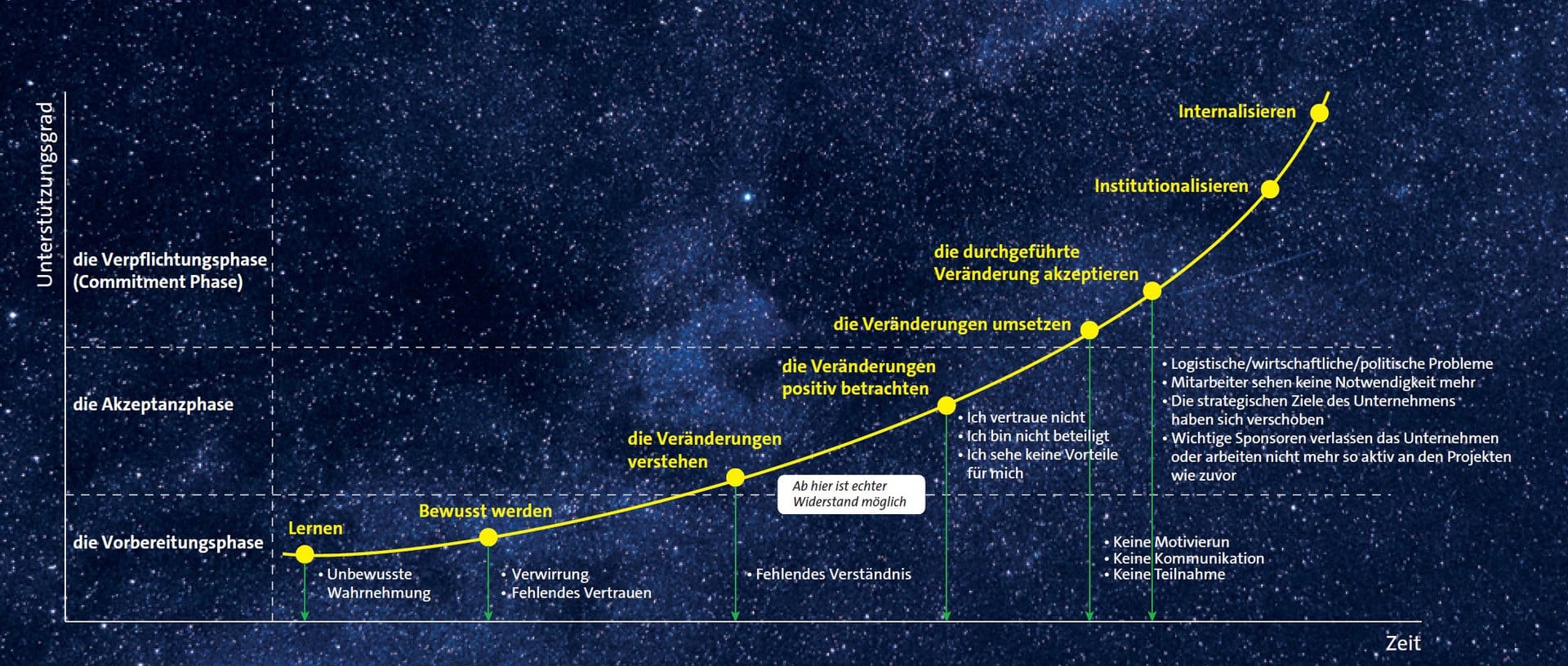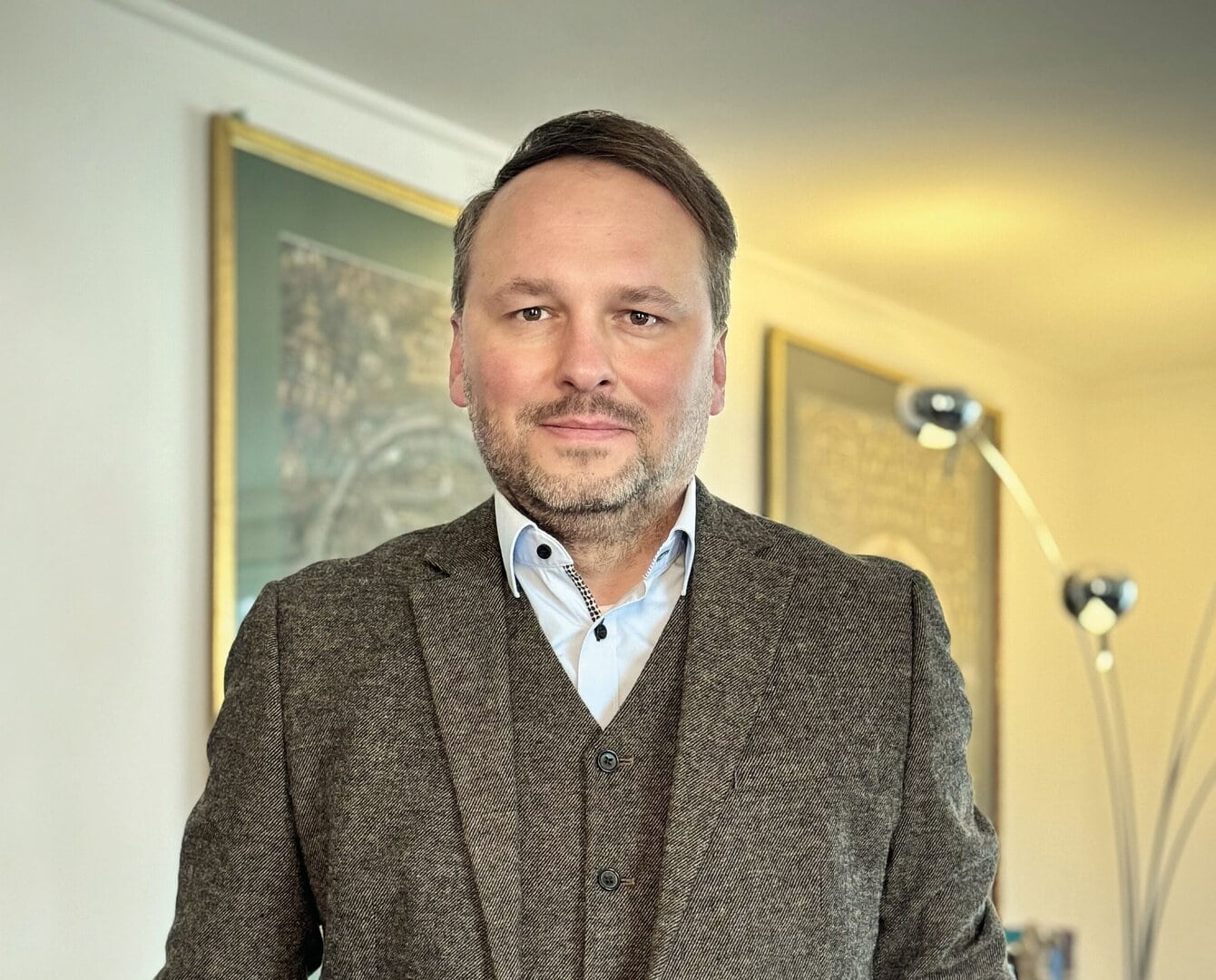The Smart Way to Successful Change


Change management is a structured framework that focuses on people and uses scientifically proven tools to successfully support change and anchor project goals in the long term.
Against change
Change management is an independent, research-based discipline, comparable to project management, and plays a central role in the change process. It is not simply a matter of communicating project updates; it is also about guiding employees through the change process using tools such as sponsorship, coaching, and resistance management. Resistance to change is the rule rather than the exception, and the influence of middle management in particular can have a significant impact on the success of a project.
It is therefore imperative that change management is not viewed as an optional extra, but rather as a necessity, particularly in the current climate. Top talent is quick to leave a company if the working environment is no longer conducive to their needs, recognition is lacking, or change is implemented without consideration for their future prospects. However, the implementation of a change management plan does not have to be complex or expensive. A change management plan typically comprises a series of fundamental measures, collectively forming the foundation. These fundamental activities can be implemented regardless of the type or size of the project, creating a solid foundation. This article will focus on the central activities forming the foundation of change management, with particular emphasis on those that can be implemented independently.
In addition, there are numerous optional tools from the areas of communication, participation, and motivation that can be used as a supplement depending on the project requirements. Change management encompasses a wide range of measures, from strategic leadership and employee involvement to early planning and targeted resource allocation. Project success is thus contingent on not only technical preparation and the classic project plan, which we are all familiar with, but also on the human factor to a significant extent.
I would like to reiterate that change management does not have to be expensive. It is often the case that many crucial steps must be initiated by the company itself. Nevertheless, external consultants can provide valuable support in preparing for and ensuring quality. An excellent case in point is the initial communication, namely the first information shared with employees about a forthcoming change. It is advisable to commence this early communication well in advance of the commencement of the project. It is advisable to avoid surprising employees with the change on the day of the kick-off. Instead, it is more beneficial to sow the seeds early on. Allowing sufficient time for employees to adjust to a change makes it more likely that they will support it positively. This is not exclusive to IT projects; it applies to any kind of change.
Acceptance with commitment model
In this context, I am referring to the commitment model, which comprises three phases: preparation, acceptance, and commitment. To develop an inner acceptance and ultimately a genuine commitment to the project, I must have been fully informed during the preparation phase and given sufficient time to internalize and understand the change. The model illustrates that each step must be completed in order to provide comprehensive support for the project. It is also important to allow for a certain time gap between the individual phases. It is not advisable to combine the phases, as is often the case with kick-offs.
It is not uncommon for them to provide information without ensuring that everything has been properly understood and internalized. It is imperative to avoid this fallacy, as summarizing these phases, particularly in the preparation phase, carries a significant risk. To provide effective support as a key user, it is essential to have a fundamental understanding and internalization of the project. Imagine if key users are asked to contribute their expertise in the design phase without this preparation—a situation which often impairs quality early on in the course of the project and one that I observe time and again in many customer projects.

Getting people on board
Transformation and digitalization are omnipresent, but without the support of people, such projects will remain unsuccessful. It is not enough to simply lay the technical foundations- the employee acceptance and active participation are of paramount importance. Projects often fail when knowledge carriers fall back on old processes out of skepticism instead of supporting the new changes. It is thus especially important to involve the employees who are most affected by the change.
This is accomplished through open communication, active listening, and targeted efforts to secure their support. The objective is not merely acceptance, but also the dedication of employees to facilitate the implementation of change in a productive manner. While technological transformations may be a primary focus, the ultimate success of the project hinges on the attitude of the employees involved. It is essential to establish a clear vision and structure at the outset and to communicate this consistently.
The role of the manager
So who takes the lead role in communicating the vision and actively demanding support? First and foremost, the decision-maker or project sponsor—ideally at the highest possible management level. Employees are always watching management's attitude to change, and a visible, approachable sponsor who champions change and communicates openly can make all the difference. While a consultant can coach, prepare speeches, and design the engagement plan, the sponsor themselves must take the active, visible role. Such regular presence and support costs time, but has an enormous impact.
It is essential to provide information about the forthcoming change and to convey its purpose. It is often effective to develop a "future story" with management that demonstrates the long-term benefits. While the consultant can facilitate the process, the core message must originate from the company itself.
It is important to remember that employees require a clear rationale for why they should support the change. They ask themselves: why is this change necessary? How is my day-to-day work changing and why now? By providing clear and comprehensive responses to these questions, employees will be more inclined to accept the change.
Filling key positions
A strategic project deserves an experienced project manager who is assertive and communicative. Too often, project managers are only chosen based on their availability and not their suitability, which can jeopardize the success of the project. The myth that the project manager must be an expert in the implemented system persists. This can be advantageous, but should not take precedence over qualities such as strong communication skills, stress resistance and assertiveness. It would be preferable for experts to be involved in the project in the capacity of subject matter experts (SMEs).
It is also crucial to define clear responsibilities and accountabilities within the project team, which is often overlooked. If the expectations for key roles such as the steering committee are not clearly defined—for example, when it is to be consulted, what decisions it is responsible for, and what criteria it must observe—this can easily lead to delays and frustration within the team.
I have frequently observed projects encountering delays, conflicts, and misguided decisions due to the appointment of unsuitable personnel to pivotal roles within the company. For this reason, project governance is a fundamental aspect of our change management methodology. It is essential to ensure that the personnel in place are capable of making target-oriented decisions and driving the project forward successfully.
Early planning, long-term success
Planning should start as soon as the idea takes shape, not just before the kick-off. Technical project plans are essential, but often the plan for the human aspect is neglected. Ultimately, the success or failure of a project is determined by the people involved, not by the systems in place. Without a solid change management plan, you run the risk of employees trying to return to old processes in a roundabout way, influencing project quality through manipulation or, in the worst case, leaving the company. Another key aspect of early planning concerns the allocation of resources: experienced employees who are involved in the project must be relieved of their day-to-day work to focus on these tasks.
Early planning enables you to secure the best and most experienced employees for the project. Involving inexperienced employees solely on the basis of their availability can entail unnecessary risks for the project and jeopardize quality. For strategically important projects, it is advisable to bring in temporary staff for day-to-day business operations in a timely manner, thus allowing experienced employees in the project team to be reassigned. This strategic approach guarantees the availability of the necessary skills to successfully implement the project.
Stakeholder analysis
Finally, I would like to point out an essential basic tool: the stakeholder analysis. At this point at the latest, it is advisable to enlist the support of an expert. A carefully conducted stakeholder analysis is an indispensable part of the change management process and forms the basis for all further measures. The aim is to identify and analyze all internal and external stakeholders who are directly or indirectly affected by the change. This includes project members as well as external partners and interest groups. The result of this analysis is a detailed stakeholder map that shows those involved in their respective roles, areas of work, and attitudes towards the project. It also provides information on who should interact with whom, who needs to be released from regular tasks and how different people can best be informed, involved, or motivated.
Failing to conduct a thorough stakeholder analysis can result in significant risks. For instance, the failure to include key stakeholders in the project initiation meeting can have a destabilizing effect on the project from the outset. A lack of clarity regarding responsibilities and a lack of information create an environment conducive to misunderstandings and delays. A comprehensive, structured overview of all stakeholders is essential for the effective and targeted use of change management tools, ensuring the project remains on track. These principles demonstrate that change management can be highly effective and cost-efficient through clear planning and targeted measures. The foundation for this should be established by internal stakeholders with guidance from external consultants. However, the implementation of the central activities (see box) must originate from within the company.

„Project management prepares a system for people, change management prepares people for the new system.“
Thomas Burza,
Director of Strategic Consulting,
LeverX
LeverX framework
These activities serve as the basis for a structured change management plan that is tailored to the specific requirements of the company. The LeverX framework is adaptable to suit varying project budgets, team sizes, and other factors, offering a flexible and scalable solution. These measures can significantly mitigate project risks. In the current economic climate, with its constraints on budgets and a shortage of skilled workers, it is vital to focus on targeted risk minimization and prevention. It is not enough for change management to merely increase employee satisfaction; it must also strengthen their loyalty, promote change, and ensure the long-term success of the project.
Organizational change management is becoming increasingly important. Many decision-makers have recognized that without sufficient communication, employee participation and motivation, project success is at risk. Professional communication is only one aspect of this; as an overall concept, change management is an independent, multi-layered discipline—as individual and multifaceted as the people for whom it is made. The increasing demand from clients demonstrates the importance of a well-thought-out change management approach.
Change management activities
Development of the vision and mission
Early communication about the meaningfulness of the project: Key questions „Why?“, „Why now?“, „Why me?“ and „How is my everyday life changing?“
Active project sponsoring: The sponsor takes on a leading role with clearly defined responsibilities:
- Authority: legitimizing change in the target group.
- Release of resources: Provision of time, budget and personnel for the success of the project.
- Public support: Clear and open promotion of change.
- Personal role: Personal involvement, e.g. through meetings with key people to secure support.
- Consequence: Creating incentives for all those who actively support change.
- Perseverance: Constant support for change and consistent rejection of opposing measures.
- Communication: Direct and continuous communication with employees and the project team throughout the entire duration of the project.
- Visibility: Presence and accessibility throughout the course of the project.
- Support as the last resort: Provision as the final escalation stage for the project team.
Casting of important rolesSelection of experienced, assertive individuals for key positions.
Stakeholder analysisIdentification and analysis of all internal and external stakeholders.






